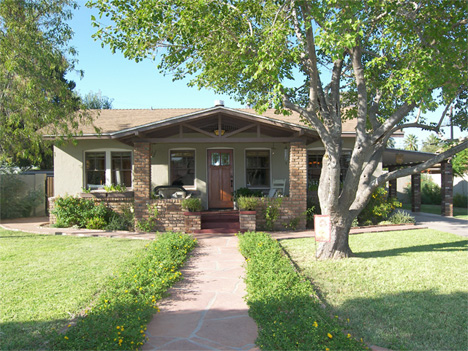This is my column for this week from the Arizona Republic (permanent link).
A pocket history of production home-building in the Phoenix-area
Production building of homes in the Valley of the Sun began in 1938. Before then, homes were one-off affairs, each one built like a tailored suit. If you tour these old homes, you can see builders playing with the techniques that would lead to production building.
The big breakthrough was the concrete slab foundation. Older homes in the Phoenix area are constructed on built-up foundations, just like homes back east. But because Phoenix doesn’t suffer hard freezes in the Winter, it was possible to pour a slab, then build the house atop it.
The benefit? If you could grade the land to a level plane, you could use the same plans over and over again. Starting in 1938, production homes — you might call them subdivision or tract homes — began to spring up all over the Valley.
Two-bedrooms, one-bath at 900 square feet was a common footprint. The move-up model was three-bedrooms, one-bath at 1,100 square feet. An evaporative cooler on the roof and a wall heater in the hallway between the living room and the bedrooms. The walls were plaster at first, but this soon gave way to drywall.
These building techniques were perfected just in time. The end of World War Two was the beginning of the huge and on-going growth surge in the Valley, and production builders could not put up tract homes fast enough.
There was a mason’s strike in Phoenix in the mid-seventies, with the result that builders switched from block-construction to wood-framing.
“Stick” houses were even cheaper to build, and wood-frame roof trusses made possible the kind of soaring vaulting and unimpeded sight-lines we expect in modern homes. Generally speaking, the interior walls in a production home can be moved or removed at will.
People can be hypercritical of the sameness of production home construction, but it was of a piece with twentieth-century mass manufacturing. Because builders learned how to contain costs and build efficiently, it was suddenly possible for ordinary people to be able to buy brand-new homes.
Technorati Tags: arizona, arizona real estate, phoenix, phoenix real estate, real estate, real estate marketing





